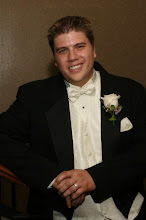The topic of this week’s blog has to do with Gardner’s Multiple Intelligences and how students learn and process new information. Gardner’s theories include eight different methods in which students learn and they are: Verbal/linguistic, Musical/Rhythmic, Logical/Mathematical, Visual/Spatial, Body/Kinesthetic, Interpersonal, Intrapersonal, and Naturalist Intelligences. However, the main purpose of this blog is to examine the multiple intelligence of Musical/Rhythmic, and whether students can lean more effectively by using music as a learning tool.
I can speak from personal experience that music has the ability to enhance learning among students. To help illustrate this statement I would like to pose the following question: What is the first step in learning how to read? The answer is learning the alphabet, and most any kindergarten aged student will be able to sing the “ABC’s” to the tune “Twinkle Twinkle Little Star” to a willing audience. The alphabet is made up of twenty six letters and to memorize such a list would be a monumental activity for an adult let alone five year old child. How is it possible that a five year old can memorize twenty six different letters while keeping them in sequential order? The answer is simple; music makes it possible to memorize such a vast amount of information. If I were to ask you to recite the alphabet right now, I bet the tune to the song will go through your head as you deliver the letters.
As a music teacher, I am surrounded by music everyday and use music to help teach all different aspects of music. When I am teaching the term largo to my students I would certainly use an example of music that the tempo is very slow. Not only would this allow the students to experience a slow tempo, but by also listening to the music will help reinforce the vocabulary term. Music should not only be reserved for the music classroom but can be used in virtually every type of classroom. Students with heavy tendencies in the intelligence of Musical/Rhythmic can take information whether it is memorizing chemistry formulas or the Bill of Rights and put them to music. Teachers could have students create rhythmic raps or musical melodies that embody the lesson objectives for that particular subject. Students will enjoy lessons like this because it will allow them to include musical genres that they enjoy, and it will give them an opportunity to include that type of music into the lesson. With this type of lesson students will enjoy working collaboratively in creating a song or rap, and as a result, the students will be teaching and learning from each other.
Music has the power to unlock the ability to memorize and learn vast amount of information. This is evident by examining how students learn and memorize the alphabet. Teachers can call upon the student’s musical skills in any number of ways to help them learn. Among these activities can be to have the students create musical raps or melodies. It is up to the teachers to utilize multiple intelligences to enhance learning among students. The music intelligence can be used for all students to help augment learning in various subject matters.
Thursday, June 18, 2009
Subscribe to:
Post Comments (Atom)


No comments:
Post a Comment